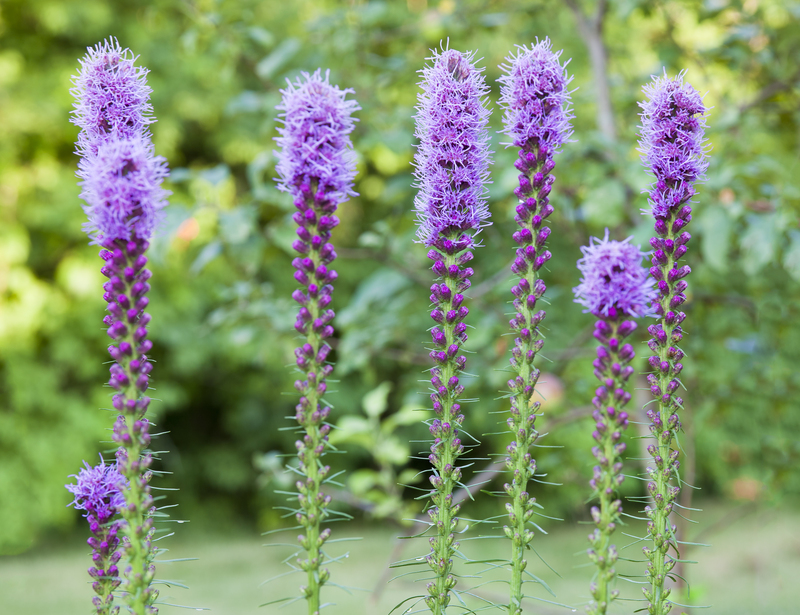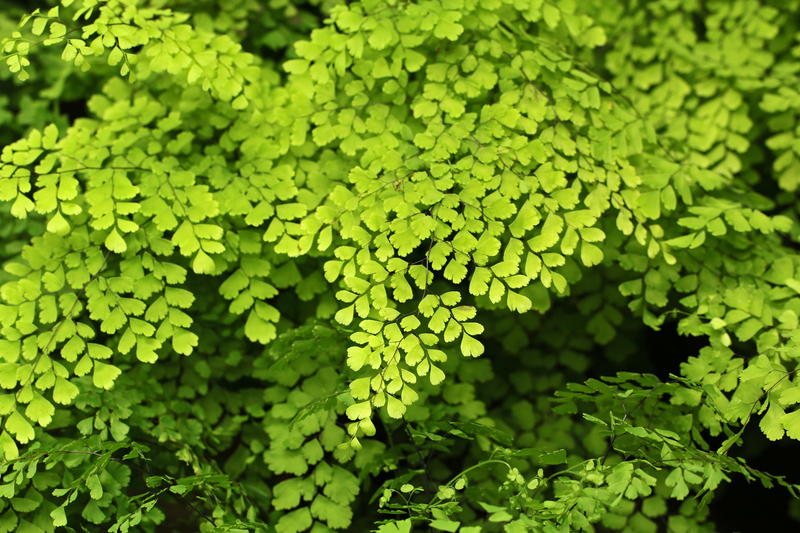Ensuring Plant Vitality through the Winter Season
Posted on 03/09/2025
Ensuring Plant Vitality through the Winter Season: A Comprehensive Guide
Winter can be a challenging period for gardeners and plant enthusiasts. As temperatures drop and sunlight wanes, ensuring the vitality and survival of your beloved plants requires careful planning, preparation, and a touch of botanical wisdom. This comprehensive article is designed to guide you through the best practices for maintaining plant health during winter--whether you are caring for outdoor beds, patio containers, or cherished indoor plants.

Understanding Winter Challenges for Plants
To provide effective winter care, it's crucial to grasp the main stressors winter imposes on plants. The cold season presents several obstacles, including:
- Freezing temperatures that can damage plant tissues and roots.
- Reduced sunlight, leading to limited photosynthesis.
- Drying winds that can dehydrate plant foliage.
- Fluctuating moisture levels due to snow, frost, and reduced rainfall.
- Potential pest and disease buildup in protected winter spaces.
Adapting your care routine to address these concerns is key to keeping plants vibrant and resilient until spring returns.
Preparing Outdoor Plants for Winter Survival
1. Assessing and Selecting Winter-Hardy Species
Not all plants are created equal when facing cold seasons. Begin by identifying which of your plants are winter hardy and which need extra protection. Most native perennials, hardy shrubs, and certain bulbs can withstand local winters with minimal intervention. Tender annuals and tropically-inclined specimens often require special measures or relocation.
2. Soil Preparation and Mulching
Healthy, insulated soil is fundamental for plant winter vitality. Mulching is one of the best wintertime practices:
- Apply a 2-4 inch layer of organic mulch, like shredded bark, straw, or compost, around the base of your plants.
- This insulates roots, prevents soil temperature fluctuations, and conserves moisture.
- Wait until the ground has frozen to mulch, trapping the cold in and preventing premature spring growth.
3. Hydration: The Forgotten Winter Need
Dehydration is a common cause of winter plant decline. While plants' water needs are reduced in dormancy, they shouldn't be ignored:
- Water well in late autumn, before the first deep freeze, to help establish moisture reserves.
- Continue supplementing water during winter thaws, especially for evergreens or newly planted specimens.
4. Physical Protection and Shelter
For delicate or marginally hardy plants:
- Use burlap wraps, cloches, or frost covers to block cold winds and prevent frost damage.
- Group potted plants and place them in sheltered corners or against south-facing walls for added warmth.
- For young trees and shrubs, consider tree wraps to block sunscald and rodent damage.
5. Pruning and Cutting Back
Pruning encourages healthy spring growth and reduces disease risk:
- Remove dead or diseased branches before the first snow.
- Refrain from heavy pruning in late fall, as this may stimulate new growth susceptible to frost.
Indoor Plant Care for Winter Health
1. Maximizing Light Exposure
Insufficient light is one of the most significant challenges for plant vitality through winter indoors. To enhance your plants' light intake:
- Place houseplants near the brightest windows, preferably south-facing.
- Rotate pots regularly to ensure even growth.
- Consider using LED grow lights to supplement natural sunlight, especially for light-hungry species.
2. Proper Watering Practices
Indoor plants require less frequent watering in winter, but careful attention is essential:
- Test soil dryness with your finger before watering.
- Water deeply but infrequently, allowing the soil to dry out between irrigations.
- Avoid overwatering, which can cause root rot in lower light conditions.
3. Humidity and Air Quality
Heated indoor air can become very dry, which is stressful for indoor plants:
- Use a room humidifier or place trays of water near plants to boost humidity.
- Group plants together to create a microclimate with higher humidity.
- Mist foliage occasionally, but ensure good air circulation to prevent fungal growth.
4. Temperature Management
Sudden drafts or heat fluctuations can lead to winter plant stress indoors:
- Keep plants away from radiators, heating vents, and cold windows.
- Maintain a consistent temperature, ideally between 60-75?F (15-24?C).
- If your home gets particularly dry and cool at night, consider moving sensitive plants to a warmer location.
5. Fertilizing: Less Is More
Growth naturally slows during winter. Over-fertilizing can damage dormant plants:
- Reduce or eliminate fertilizing during the coldest months for most plants.
- Resume regular feeding once longer days and active growth return in spring.
Greenhouse and Conservatory Considerations
For gardeners utilizing greenhouses or conservatories, maintaining winter plant vitality means leveraging the benefits of controlled environments:
- Check heating systems and thermostats to keep minimum temps above freezing.
- Ensure vents and fans operate for adequate air exchange, which reduces fungal issues.
- Regularly inspect plants for pests hiding in sheltered settings and address promptly.
- Maintain robust humidity but avoid excessive moisture to prevent fungal disease.
Troubleshooting Common Winter Plant Problems
1. Leaf Drop and Yellowing
Sudden or partial leaf loss is often a response to environmental stress. Common causes include drafts, low humidity, and overwatering. Move plants to a steadier environment, adjust watering, and lightly mist if needed.
2. Pest Infestations
Spider mites, aphids, and fungus gnats can become a problem indoors over winter. Inspect leaves frequently and isolate infested plants. Use insecticidal soap or neem oil as a gentle, plant-friendly remedy.
3. Mold and Fungal Diseases
Poor ventilation and wet soil can trigger gray mold or powdery mildew. Always provide good air circulation and allow soil to dry adequately between waterings.
Special Strategies for Outdoor Container Plants
- Choose the right pots: Frost-resistant materials like ceramic, stone, or thick plastic are less likely to crack.
- Cluster containers together: Grouping helps trap heat around roots.
- Elevate pots off concrete: Use pot feet or bricks to prevent freezing damage from below.
- Wrap or insulate pots: Bubble wrap and burlap can shield roots from deep freezes.
- Move planters to sheltered locations: Under eaves, against heated walls, or into unheated garages if possible.
The Importance of Winter Plant Dormancy
Many common garden and house plants utilize winter dormancy as a survival strategy, suspending active growth to conserve energy. Respect this natural cycle by minimizing disturbance--avoid repotting, pruning, or feeding unless absolutely necessary.
Dormant roots and stems may not show signs of life above ground, but beneath the soil, crucial processes are still occurring. Given proper winter care, your plants will emerge healthy and robust at the first signs of spring!

Frequently Asked Questions: Plant Care in Winter
1. Can I leave potted tropical plants outside during winter?
It is generally unsafe to leave tropical houseplants outdoors during winter in temperate climates. Bring them indoors well before temperatures approach freezing. Acclimate gradually to prevent shock, and place in bright, draft-free locations.
2. Should I fertilize my plants in winter?
Most plants should not be fertilized in winter while they are dormant. Resume feeding when active growth is apparent.
3. How do I keep my garden beds from heaving in winter?
Mulching significantly reduces soil heaving by insulating soils and maintaining consistent temperatures. Keep mulch a few inches from the plant crowns to prevent rot.
4. Are snow and frost always harmful to plants?
Surprisingly, snow can act as an insulating blanket, protecting ground-level plants from extreme cold. Heavy, wet snow can damage branches, so brush off accumulations when possible.
Conclusion: Nurture Vitality Through the Cold
Ensuring plant vitality through the winter season is both a science and an art, requiring attentive care, adaptability, and a basic understanding of your plants' individual requirements. Whether outdoors or in, the essentials are universal: protect from extreme cold, avoid overwatering, provide as much light as possible, and embrace dormancy as a natural rhythm.
By following the strategies described above, you can help your garden and houseplants survive--even thrive--during winter's chill, emerging in spring stronger and more beautiful than ever.
For more insights and expert gardening tips, subscribe to our newsletter and become part of our community of passionate, year-round plant lovers!



